So I have a 3D openGL application and I wanted to display a 2D HUD, I understand the basic concept of how to do this after a lot of googling but nothing I try makes it show up. My current code after going over many other examples is this:
// HUD ///////////////////////////////////
glMatrixMode(GL_MODELVIEW);
glLoadIdentity();
glMatrixMode(GL_PROJECTION);
glLoadIdentity();
glOrtho(0, (GLdouble)WIDTH, (GLdouble)HEIGHT, 0, -1, 1);
glDisable(GL_DEPTH_TEST);
glDisable(GL_CULL_FACE);
glColor3f(1, 1, 1);
glPushMatrix();
glBegin(GL_QUADS);
glVertex3f(-5.0f, 5.0f, 0.0f);
glVertex3f(-5.0f, -5.0f, 0.0f);
glVertex3f(5.0f, -5.0f, 0.0f);
glVertex3f(5.0f, 5.0f, 0.0f);
glEnd();
glPopMatrix();
glEnable(GL_DEPTH_TEST);
glDepthMask(GL_TRUE);
Right now nothing visually changes, I can get the whole screen to clear to a colour but even then I can't seem to draw a quad on it.
EDIT:
glDisable(GL_CULL_FACE);
glDisable(GL_DEPTH_TEST);
glDepthMask(GL_FALSE);
glMatrixMode(GL_PROJECTION);
glLoadIdentity();
glOrtho(0, WIDTH, HEIGHT, 0, -1, 1);
glMatrixMode(GL_MODELVIEW);
glLoadIdentity();
glClear(GL_DEPTH_BUFFER_BIT);
glColor3f(1, 1, 1);
glPushMatrix();
glBegin(GL_QUADS);
glVertex3f(-10.0f, 10.0f, 0.0f);
glVertex3f(-10.0f, -10.0f, 0.0f);
glVertex3f(10.0f, -10.0f, 0.0f);
glVertex3f(10.0f, 10.0f, 0.0f);
glEnd();
glPopMatrix();
glEnable(GL_CULL_FACE);
glEnable(GL_DEPTH_TEST);
glDepthMask(GL_TRUE);
EDIT 2: SKYBOX CODE
glDisable(GL_CULL_FACE);
glDepthFunc(GL_LEQUAL); // Change depth function so depth test passes when values are equal to depth buffer's content
skyShader.Bind();
view = glm::mat4(glm::mat3(camera.GetViewProjection())); // Remove any translation component of the view matrix
glUniformMatrix4fv(glGetUniformLocation(skyShader.getProg(), "view"), 1, GL_FALSE, glm::value_ptr(view));
glUniformMatrix4fv(glGetUniformLocation(skyShader.getProg(), "projection"), 1, GL_FALSE, glm::value_ptr(projection));
// SKYBOX CUBE /////////////////////////////////
glBindVertexArray(skyboxVAO);
glActiveTexture(GL_TEXTURE0);
glUniform1i(glGetUniformLocation(skyShader.getProg(), "skybox"), 0);
glBindTexture(GL_TEXTURE_CUBE_MAP, skyboxTexture);
glDrawArrays(GL_TRIANGLES, 0, 36);
glBindVertexArray(0);
glDepthFunc(GL_LESS); // Set depth function back to default


